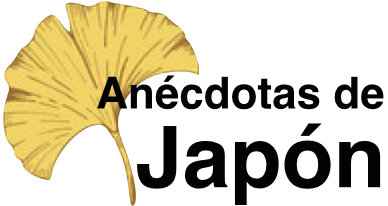The story
[/spb_text_block] [spb_text_block pb_margin_bottom=”no” pb_border_bottom=”no” width=”3/4″ el_position=”first last”]There is a town in Japan, in the past of such importance that it used to compete with the splendor of Kyoto itself. Having grown up in a time of wars, both his parents lost to them, a young man decided to create at least one peaceful place on this land. His dream turned into a reality, a city of temples and gardens that soon gained the nickname “Pure Land on Earth” (the Pure Land refers to the Buddhist belief of a celestial realm of a buddha, somewhat comparable to heaven). The area flourished as the center of nothern Japan, many believing it would surpass Kyoto’s wealth and reputation, then the capital.
Unfortunately, its role as a peace city is what brought its demise not even 100 years after its foundations were planted. A popular samurai lived back in the day, said to be very handsome and today considered one of Japan’s tragic heroes, he was running from his brother who was jealous of his cleverness and strength, he feared the young samurai would try to take his role as the next shogun. The samurai had grown up in the Pure Land on Earth and had been close friends with the founder, so he was allowed to hide in town.
[/spb_text_block] [spb_text_block pb_margin_bottom=”no” pb_border_bottom=”no” width=”1/1″ el_position=”first last”]
The shogun found him, however, and surrounded his palace forcing him to commit seppuku, ritual suicide. But he didn’t have enough with killing his brother, he was also scared of the power and wealth the peaceful city had gained and feared it would surpass Kyoto, his own city. So, making the most of his brother as an excuse, he wiped out the entire land, burning temples to the ground and tearing apart all the gardens and palaces he could find.
Hundreds of years later, a famous poet would visit the ruins of this town and would write one of his most known poems:
Mounds of summer grass,
the place where noble soldiers
one time dreamed a dream.

This would be the end of the story, just a memory of the past, but three temples survived the destruction! They are considered some of the best in Japan and are easily visitable, alongside some of the ruins and the tombs of the samurai, his family and his very loyal retainer.
Multiple festivals are held during the year: representations of the lords’ favourite passtimes, traditional theatres, flower plantations and parades down the streets.
[/spb_text_block] [spb_text_block pb_margin_bottom=”no” pb_border_bottom=”no” width=”1/2″ el_position=”first”]

Nearby
[/spb_text_block] [spb_text_block pb_margin_bottom=”no” pb_border_bottom=”no” width=”3/4″ el_position=”first last”]Do you have more time in the region? Nearby there are many interesting things to do! This area is considered Japan’s countryside, so there are vast scenes of rice fields, gorges and nature pretty much anywhere you look! Two of these gorges stand out the most, one offers “flying dango”: you put your money in a basket and as you ring a bell the basket will be wisked away with a string, flying over the river to the restaurant on the other side. Soon the basket will return with your dumplings! The other gorge offers boat rides during which the guide sings local folk songs.
Numerous parks and open air museums with traditional houses can be found, hot springs, snow during winter and the ragged but photogenic coast of the ocean.
[/spb_text_block] [spb_text_block pb_margin_bottom=”no” pb_border_bottom=”no” width=”1/3″ el_position=”first”]





Where to stay?
[/spb_text_block] [spb_text_block pb_margin_bottom=”no” pb_border_bottom=”no” width=”3/4″ el_position=”first last”]Today we present a minshuku. A minshuku is a traditional inn, the main difference from a traditional ryokan being that it is family-run. This means they tend to be found more often in the countryside, in old houses that are lived in by the family. They don’t offer the same amount of services that a ryokan would, but they are cheaper for those who may not be able to splurge on a ryokan stay and offer an opportunity to meet the local people!
This inn is right in the middle of town, a few minutes walk from the station and next to one of the main temples.
Price: around 6000 yen, breakfast included.
(Note: This is just a recommendation! We’d be happy to find a different place to stay if this one doesn’t fit your tastes.)
[/spb_text_block] [spb_text_block pb_margin_bottom=”no” pb_border_bottom=”no” width=”1/2″ el_position=”first”]




